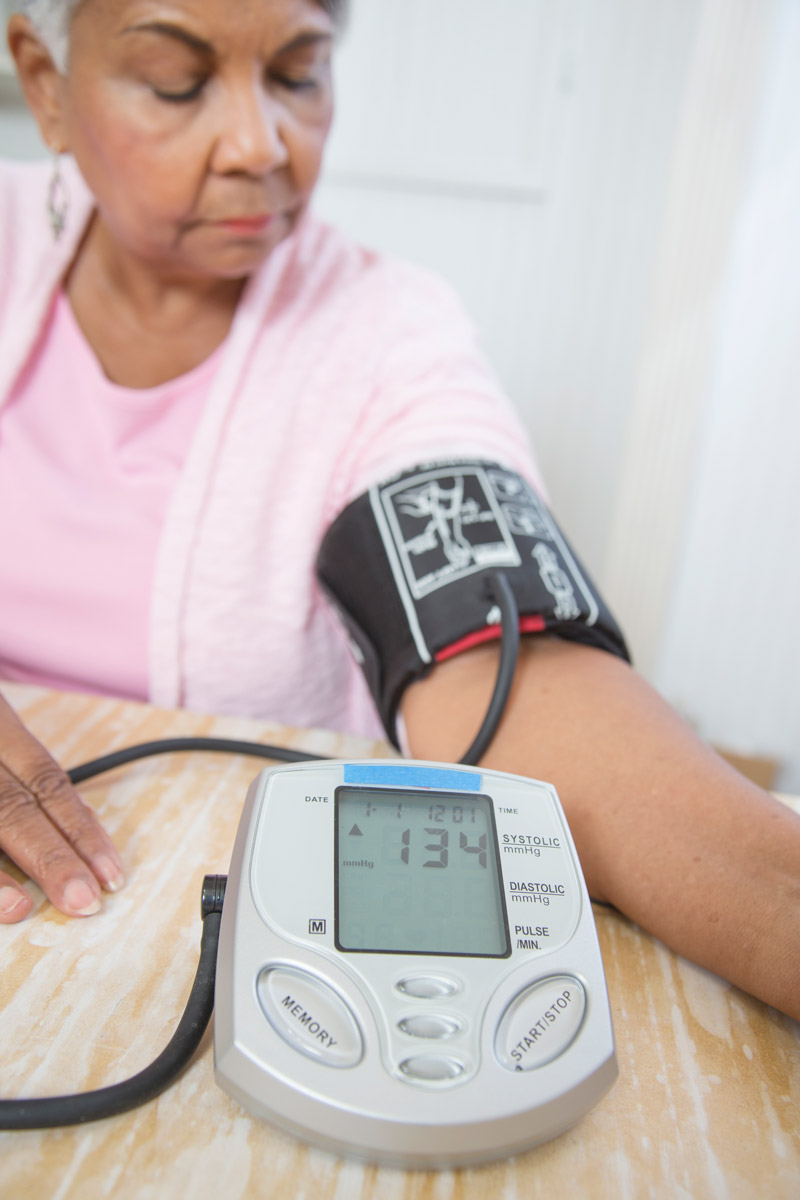Pulse pressure is the difference between the upper and lower numbers of your blood pressure. This number can be an indicator of health problems before you develop symptoms. Your pulse pressure can also sometimes show that you’re at risk for certain diseases or conditions.
Advertisement
Cleveland Clinic is a non-profit academic medical center. Advertising on our site helps support our mission. We do not endorse non-Cleveland Clinic products or services. Policy

Pulse pressure is the difference between the upper and lower numbers of your blood pressure. Pulse pressure tends to increase as you get older. But it can also be a sign of cardiovascular problems before you develop symptoms.
Advertisement
Cleveland Clinic is a non-profit academic medical center. Advertising on our site helps support our mission. We do not endorse non-Cleveland Clinic products or services. Policy
Maybe you’ve only heard about pulse pressure recently and now it’s taking over your thoughts. Keep in mind that it’s just one measure of your health. When looking at the whole picture, a provider will look at many aspects of your health instead of just this one number.
When you check your blood pressure, you get two numbers, the systolic pressure (the top number) and the diastolic pressure (the bottom number). The systolic pressure measures how much pressure is on your arteries each time your heart squeezes. The diastolic pressure is how much pressure is on your arteries when your heart relaxes.
The pulse pressure formula is the difference between the higher number and the lower number of your blood pressure.
A normal pulse pressure is 40 mmHg.
When making a pulse pressure calculation, it’s important to know that your arteries become less stretchy and flexible (compliant) as you get older. This is natural. Arteries also tend to be stiffer in people with diabetes and chronic kidney disease.
With less arterial compliance and more arterial stiffness, here’s what usually happens after age 50:
Advertisement
This is why your pulse pressure gets higher as you age.
Pulse pressure variation is normal and expected. When you breathe, your heart reacts by increasing how much blood it pumps. These changes in pulse pressure are usually very small, about five to 10 mmHg. Your blood pressure can vary from moment to moment, by time of day and by body position.
A wide pulse pressure — sometimes called a high pulse pressure — means there’s a wide difference between the top and bottom numbers. For people who aren’t physically active, wider pulse pressures can indicate problems either now or in the future. People with a wide pulse pressure may already have a leaky or narrow aortic valve or atherosclerosis. In the hospital, people with an infection or inflammation can show a wide pulse pressure, as well.
Healthcare providers consider a pulse pressure higher than 100 mmHg to be a truly widened pulse pressure. But even as pulse pressure rises above the normal of 40 mmHg, the risk of problems with your heart and blood vessels goes up, even with small increases. Every 10 mmHg increase in your pulse pressure can raise your risk of coronary artery disease by 23%.
Pulse pressures of 50 mmHg or more can increase your risk of:
Higher pulse pressures may also play a role in eye and kidney damage from diseases like diabetes.
While wider pulse pressures also happen in very active people, like long-distance runners, providers don’t consider it a problem for them. This is because runners’ hearts pump more blood than the average person’s. Runners also have flexible, healthy arteries because of their regular activity.
A narrow pulse pressure — sometimes called a low pulse pressure — is a pulse pressure that’s one-quarter or less of your systolic pressure (the top number). This happens when your heart isn’t pumping enough blood, like in heart failure and cardiac tamponade. It also happens when you lose a lot of blood or bleed internally from an injury.
Managing your pulse pressure is important because a higher pulse pressure means your heart is working harder than usual, your arteries are less flexible than they should be or both. Both issues increase your risk of heart and circulatory problems, especially a heart attack or stroke. The risk is even greater when it’s both at the same time — which it commonly is, especially in adults older than 55.
Advertisement
Managing your pulse pressure goes hand-in-hand with taking care of your overall blood pressure. There are many ways to take care of your blood pressure:
Advertisement
If you check your blood pressure regularly and notice you have an unusually wide (60 mmHg or more) or narrow pulse pressure (where your pulse pressure is less than one-quarter of the top blood pressure number), you should schedule an appointment with your healthcare provider to talk about it.
It can be confusing to see your blood pressure numbers going in different directions. Talk to your primary care provider about whether it’s from aging or a health condition. They may use your pulse pressure to get more information about your heart and blood vessel health. If you have questions about your pulse pressure or blood pressure, your provider is a great resource. They can answer questions and direct you to other experts or sources of information. That way, you can feel better prepared for whatever comes next.
Advertisement
Cleveland Clinic’s primary care providers offer lifelong medical care. From sinus infections and high blood pressure to preventive screening, we’re here for you.

Last reviewed on 07/25/2024.
Learn more about the Health Library and our editorial process.